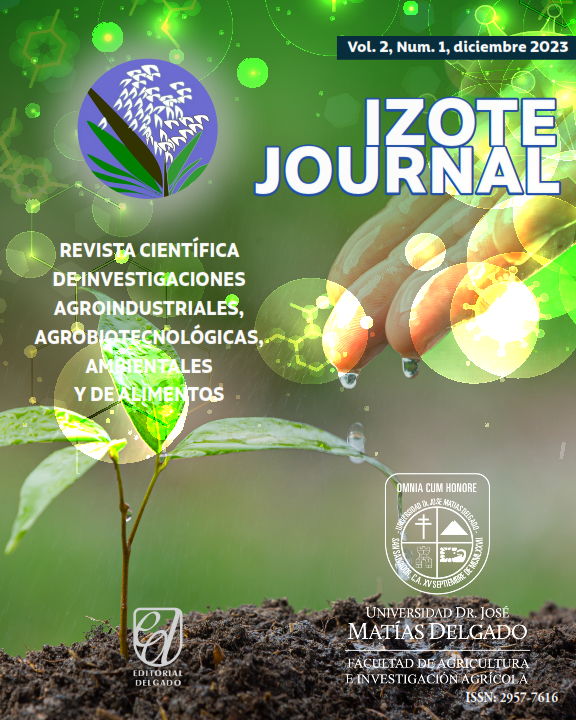Extraction and quantification of betalains in fourvarieties of dragon fruit for food coloring
Keywords:
Dragon fruit, betalain quantification, colorant , food colorant, UV-VIS spectrophotometryAbstract
The main objective of this research study was to develop a procedure for extracting natural colorants, specifically betalains, from four varieties of dragon fruit (orejona, cebra, lisa, and rosa). Chromatographic and spectrophotometric techniques were employed for their characterization and quantification, aiming to obtain pigments suitable for various food products.The extraction process of the colorants involved several steps. Initially, an initial filtration was performed using a blanket-type sieve, followed by sonication for 30 minutes at a temperature below 30°C. Subsequently, the mixture was agitated for an hour, and a final filtration was conducted using the same blanket-type sieve. The obtained extracts underwent ultrafreezing and subsequent lyophilization to obtain the final product in powder form.Quantification of the betalains was carried out using UV-VIS spectrophotometry as an approximate method. The results for betacyanin quantification were as follows: orejona (0.05 mg/g), cebra (2.92 mg/g), lisa (3.88 mg/g), and rosa (6.02 mg/g), with rosa variety showing the highest content of betacyanins.In addition to quantification, complementary characterization analyses were performed using techniques such as thin-layer chromatography, HPLC (High Performance Liquid Chromatography), UV-VIS spectrophotometry, and FTIR (Fourier Transform Infrared Spectrsocopy).Furthermore, colorimetry analyses were conducted on yogurt and ice cream prepared with the obtained dragon fruit colorant. A sensory analysis was also carried out to evaluate the acceptance of the colorant in food applications.
Downloads
References
ASTELLANOS-SANTIAGO, Elena; y M. YAHIA, Elhadi. 2008. Identification and Quanti-fication of Betalains from the fruits of 10 Mexican Prickly Pear Cultivars by High-Performance Liquid Chromatography and Electrospray Ionization Mass Spectrometry. En: Journal of Agricultural and Food Chemistry. [En línea]. México. 56(14), pp. 5758-5764. [Fecha de consulta el: 28 de junio de 2022]. ISSN: 5758-5764. Disponible en: https://sci-hub.se/10.1021/jf800362t
CERVANTES-SÁNCHEZ, Martha Elena; HUICAB-MARTÍNEZ, Jorge Luis; GARCÍA-VELA, José Alfredo y VANOYE-ELIGIO, Maximilia-no. 2017. Obtaining a natural dye from the pitahaya (Hylocereus undatus haworth, britton and rose) from
IZOTE Journal Vol. 2, Num. 1, diciembre 202371the southern region of the state of Campeche [Ob-tención de un colorante natural a partir de la pitaha-ya (Hylocereus undatus haworth, britton y rose) de la región sur del estado de Campeche]. En: Mexican Journal of Biotechnology [En línea]. 2(2), pp. 65-73. [Consultado el: 20 de septiembre de 2022]. ISSN: 2448-6590. Disponible en: https://docs.wixstatic.com/ugd/38ce56_56e7822931a644fe989c28776d-5f517f.pdf
GONZÁLEZ-ORTIZ, Alfonso y GUERRE-RO-BELTRÁN, J. A. 2018. Betalaínas: importancia, presencia en vegetales y sus aplicaciones en la indus-tria alimentaria. En: Revista Temas Selectos de Ingeniería de Alimentos de la UDLAP. [En línea]. 11(2), pp. 12-21. [Consultado el: 28 de junio de 2022]. Disponible en: https://issuu.com/webudlap/docs/tsia-vol11-gonzalezortiz#:~:text=Las%20betala%-C3%ADnas%20son%20compuestos%20que,beta-bel%20rojo%20(Beta%20vulgaris)
HERNÁNDEZ-CARRILLO, Alma Lizeth y RECINOS-GUERRERO, Karen Elizabeth. 2022. Extracción y cuantificación de betalaínas en cuatro va-riedades de pitahaya para colorante alimentario [Tesis de pregrado de Ingeniería en Alimentos]. Universi-dad Dr. José Matías Delgado. Antiguo Cuscatlán, El Salvador
PAUCAR-MENACHO, Luz María, SALVA-DOR-REYES, Rebeca, GUILLÉN-SÁNCHEZ, Jhoseline y MORI ARISMENDI, Sigry. 2016. Efecto de la sustitución parcial de la harina de trigo por harina de soya en las características tecnológi-cas y sensoriales de cupcakes destinados a niños en edad escolar. En: Scientia Agropecuaria. [En línea]. 7(2). pp. 121-132 [Consultado el: 25 de julio de 2022]. ISSN: 2077-9917. Disponible en: http://www.scielo.org.pe/scielo.php?script=sci_arttext&pi-d=S2077-99172016000200005
KONICA MINOLTA. 2020. Colorimetric Te-chnology. [En línea]. [Consultado el: 16 de junio de 2022]. Disponible en: https://www5.konicaminolta.eu/nl/measuring-instruments/media-centrum/pos-ter-downloaden.html
MINISTERIO DE AGRICULTURA Y GA-NADERÍA [MAG]. 26 de julio de 2021. La pitaha-ya también llamada fruta del dragón, es un cultivo exótico y poco conocido en nuestro país. En: twit-ter. [En línea] [Consultado el: 15 de junio de 2022]. Disponible en: https://twitter.com/agriculturasv/sta-tus/141982287937497088?lang=es
VERONA-RUIZ, Anggie, UCRIA-CERNA, Juan y PAUCAR-MENACHO, Luz. 2020. Pi-tahaya (Hylocereus spp.): Cultivo, características fisicoquímicas, composición nutricional y com-puestos bioactivos. Scientia Agropecuaria [En línea]. 11(3), pp. 439-453. [Consultado el: 15 de junio de 2022]. ISSN 2077-9917. Disponible en: http://www.scielo.org.pe/scielo.php?script=sci_arttex-t&pid=S2077-99172020000300439&lng=es&n-rm=iso.
Downloads
Published
How to Cite
Issue
Section
License
Copyright (c) 2023 Izote Journal

This work is licensed under a Creative Commons Attribution-NonCommercial 4.0 International License.






